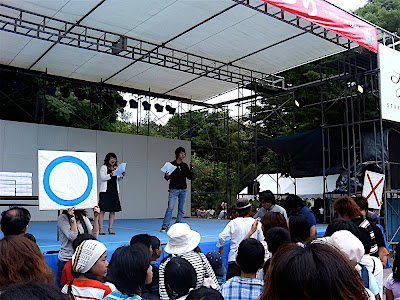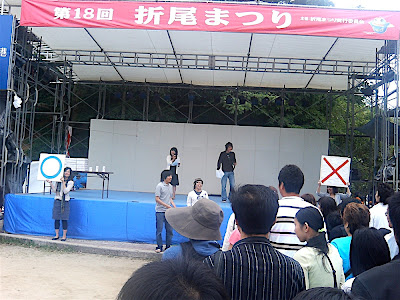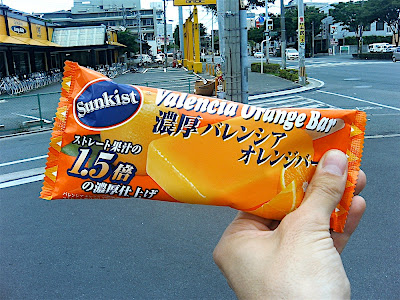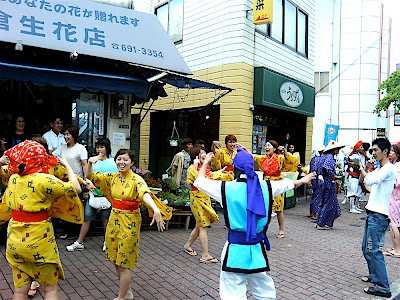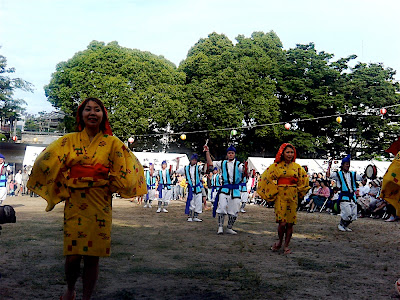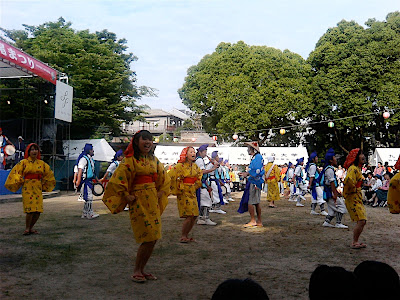Me interesa mucho el intercambio cultural España-Japón, o en general entre gente que habla español y gente que habla japonés. Por esto me gusta mucho leer blogs de japoneses que escriben en castellano. Estas es una lista de los que conozco y están en activo.
日本とスペインの交流、及び日本語をしゃべる人とスペイン語をしゃべる人のコミュニケーションにすごい興味があるので、日本人がスペイン語で書くブログを読むのは楽しい。下記は最近更新されている僕が知っているそういう人達のブログのリスト。
I’m very interested in cultural exchange between Spain and Japan or, to put it in a general way, between Japanese speakers and Spanish speakers. That’s why I enjoy reading blogs written in Spanish by Japanese people, and these are the ones that I know and are getting regular updates.
- Diario de Pajarito
elico vive cerca de Osaka y mantiene un blog personal en español.
elicoさんは大阪の近くに住んでいる。スペイン語で日記を書いている。
elico is a girl who lives near Osaka, and maintains a Journal in Spanish. - ガリシアへ行こう! / Imos a Xapon!
masashi es un japonés en Galicia. Escribe en español, en japonés, y a veces en gallego.
masashiさんはスペインのガリシアにいる日本人。スペイン語と日本語とたまにガリシア語で書いている。
masashi is a Japanese guy in Spain’s Galicia. He’s writing in Spanish and Japanese, and sometimes in Galician. - Una japonesa en Japon ー ある帰国子女のブログ
nora vive en Tokio, y acaba de empezar un blog en español y japonés.
東京に住んでいるnoraさんは最近スペイン語と日本語でブログを書き始めた。
nora lives in Tokyo, and has just started writing a blog in Spanish and Japanese. - Una oveja negra en Tokio
Litsuko es escritora en Tokio y escribe su blog en español.
東京の作家さんのLitsukoさんはスペイン語でブログを書いている。
Litsuko is a writer in Tokyo, and also maintains a blog in Spanish. - Un Paisa borracho en Tokio
Kensuke ha vivido en Colombia, y ahora escribe en español desde Tokio.
コロンビアから帰ってきたKensukeさんは今東京でスペイン語のブログを書いている。
Kensuke came back from Colombia and started a blog in Spanish that he writes from Tokyo.
Y por último, mi favorito.
最後に、僕のお気に入り。
And here goes my favorite.
- pepino ペピーノ / game boy rock band (ai)
ai, la cantante de pepino, escribe en este mismo blog en español, japonés e inglés.
ペピーノのヴォーカルのaiは当ブログでスペイン語、日本語と英語で書いている。
pepino’s lead singer ai writes this blog in Spanish, Japanese and English.
¡Ya me han presentado un blog japonés en español más en los comentarios!
コメントで日本人が書くスペイン語ブログを1つ教えてもらった!
I’ve already been told about another blog written in Spanish by Japanese people at the comments!
- La vida diaria de Miho 美保的日常生活 (gracias assasin)
Miho nos cuenta en español detalles sobre Japón, y también sus dudas de español.
美保さんはスペイン語で日本のいろんなところを教えたり、スペイン語の疑問を聞いたりする。
Miho writes in Spanish about Japan, and about her Spanish studies.

